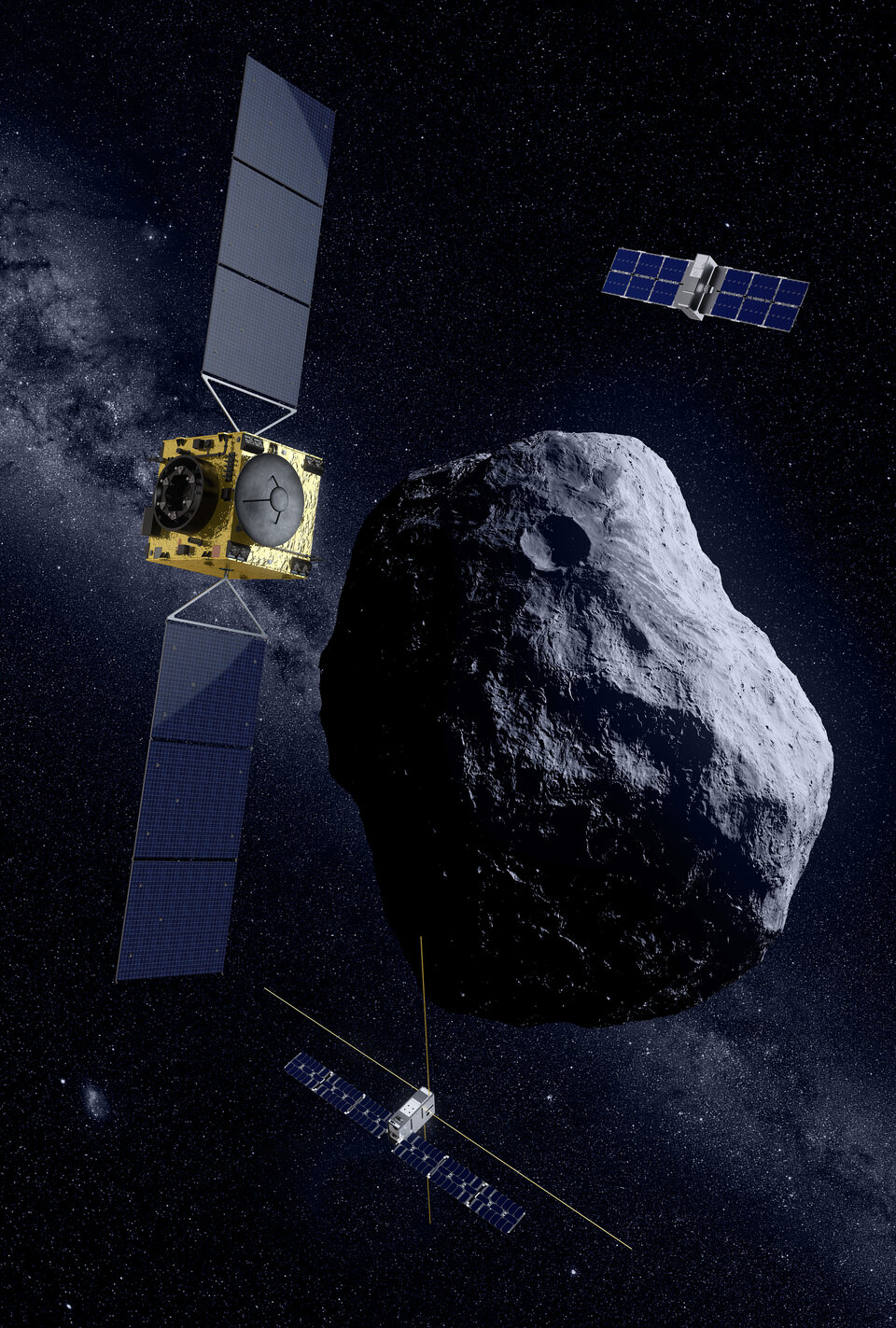After NASA's asteroid impact, ESA's Hera comes next
01/09/2022
This month NASA’s DART spacecraft will collide with the smaller of the two Didymos asteroids in deep space, attempting to shift its orbit in what will be humankind’s first test of the ‘kinetic impactor’ planetary defence technique. Meanwhile, down on the ground, ESA’s follow-on mission to Didymos has reached its own crucial milestone.

Hera, her CubeSats, and their rocky target destination
The main 780-m diameter Didymos asteroid is orbited by the 160-m diameter Dimorphos ‘moonlet’. DART, NASA’s Double Asteroid Redirect Test, will impact Dimorphos on 26 September, which should shift its orbital trajectory in a small but measurable way, observable from Earth.
Next comes ESA’s Hera spacecraft, which will fly to Didymos to perform a close-up survey of the aftermath of impact, gathering key information such as the size of DART’s crater, the mass of Dimorphos and its make-up and internal structure. Hera’s extra data will help turn the DART deflection experiment into a well-understood, repeatable technique that might one day be needed for real.
“The Hera team is currently in the midst of our Critical Design Review, which is the last mission’s last major review before launch acceptance,” explains Karim Mellab, Hera’s Assembly, Integration and Test manager.
. . .

Dimorphos asteroid to scale with Rome's Colosseum
More:
https://www.esa.int/Space_Safety/Hera/After_NASA_s_asteroid_impact_ESA_s_Hera_comes_next

